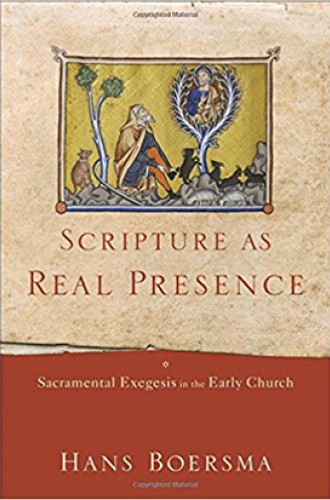Reading the Bible with a sacramental sensibility
Hans Boersma sees scripture as more open to imaginative reading than our modern methods permit. The key is faith in Christ.
Hans Boersma, who teaches theology at Regent College in Vancouver, has written a compelling book on patristic interpretation of scripture that proceeds from a “sacramental sensibility.” He provides a rich inventory of examples of patristic exegesis, notably Origen and Augustine, and advocates for the recovery of such a reading—one that with great figurative imagination finds the Old Testament fully occupied by the mystery of Christ. Boersma’s approach to scripture, which he identifies as “Christian Platonism,” contrasts starkly with the thin, rationalistic historical-critical approaches of conventional modernity.
The book contains nine studies of specific texts and the ways they were read by the early church fathers. In each case, Boersma brings to the text an immense amount of discerning scholarship from the vast patristic corpus. The sum of his argument is that all scripture is richer, more complex, more pluralistic, and more open to imaginative reading than our modern methods have permitted. The key to that rich, complex, pluralistic, openness is faith in Christ, for it is Christ who occupies every part of scripture as “real presence.”
Several of Boersma’s examples are worth lingering over. Discussing the “visitation” to Abraham and Sarah at Mamre (Genesis 18), Boersma uses the rubric “hospitable reading.” He shows how Origen read the text as an embodiment of divine “condescension” in order to accommodate human reality. He then contrasts Origen’s perspective with that of John Chrysostom, who finds in the text hospitality as a “moral virtue.” Thus, the text points to a generosity not only of divine condescension but also of human practice. But in contrasting Origen’s Alexandrian reading with Chrysostom’s Antiochian perspective, Boersma claims that the latter is “more horizontal” in its import. This theme of human moral responsibility is largely absent in the remainder of Boersma’s book (except when it appears in his final study, on the Beatitudes).





